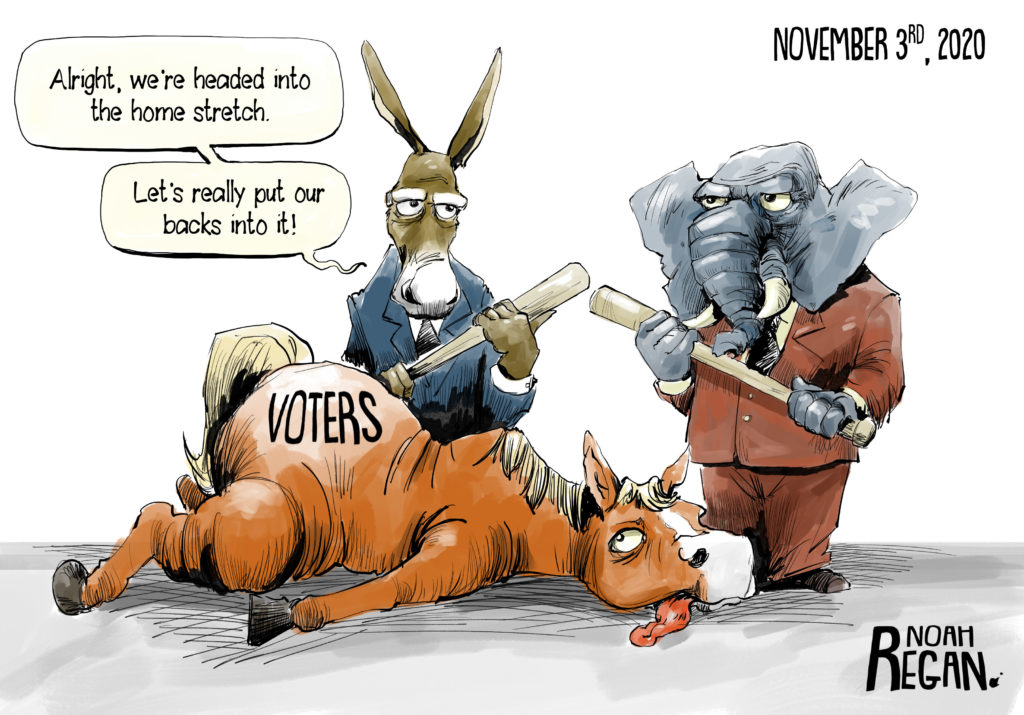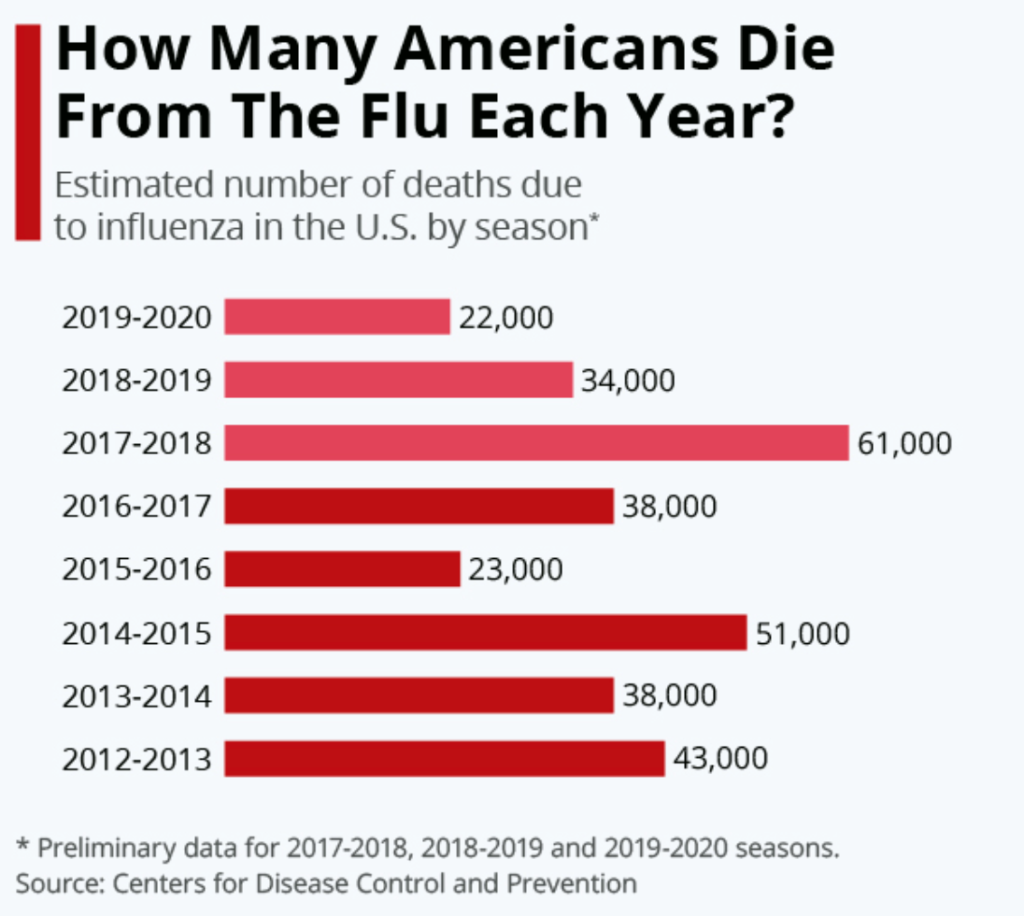The Top 100 Coops at Year-end 2019
For 30 years, the National Cooperative Bank (NCB) has published the annual NCB Co-op 100, America’s top 100 Cooperatives by total revenue. In 2019, these member-owned and controlled businesses had total revenues of $228 billion.
https://impact.ncb.coop/hubfs/assets/resources/NCB-Co-op-100-2020-final.pdf
Who is on the list?
Five credit unions are in the top 100. Navy is #7; State Employees (NC) #22; PenFed #30; BECU #57; and SchoolsFirst #78.
There are several well known consumer brand names of firms such as SunKist Growers, Land O’Lakes, Ocean Spray, Welch Foods and ACE hardware. In addition to finance, larger co-ops also serve the farming, energy, health care, grocery and hardware sectors.
The total assets of these leaders are $733 billion.
The compiler of the list, NCB, was created to address the financial needs of an underserved market niche: people who join together cooperatively to meet personal, social or business needs especially in low income communities. Chartered by Congress in 1978, NCB was privatized in 1981. Owned by its more than 3,100 customer-owners, it has $7.9 billion in assets under management. As part of its enabling legislation, NCB was tasked with ensuring that 35% of the capital it deploys will benefit low income communities.
A Credit Union Opportunity?
The question for the $1.7 trillion cooperative credit union community’s 5,200 institutions: What are we doing to enhance cooperative solutions for the American economy beyond consumer finance?
Democracy and Voting in Credit Unions: Does it Mean Anything?
In an election late last year 157,655 members were asked whether they should merger their eight-decade old, successful, super performing community charter with over $2.1 billion in assets.
Here are the voting results certified to the NCUA:
- 7,331 or 4.65% of members voted
- 6,658 or 4.4% voted in favor
- 473 or .3% voted against the merger
150,324 or 95.35% of members did not vote on the future of their credit union.
Of those voting only two did so in person, the rest by mailed ballot.
Is This What Cooperative Democracy Should Be?
Is this “democratic” when only 4.6% of the share owners vote?
Were members even aware of what was happening to their credit union?
How could such low participation occur on such a consequential issue?
Most important, is this perfunctory, minimalist process right for members? Their community? The credit union system? And cooperatives’ role in America’s economy?
Does Your Vote or Even Voting Matter?
We are all living in an election season where everyone is being urged to vote. Court battles are being waged over time limits on early voting, number of drop boxes, how long after November 3rd ballots can be counted, and numerous other election processes.
Every media outlet is tracking not just candidate debates and policy positions, but the voting activity itself. Will the outcome be seen as fair? Are votes being suppressed by changing rules?
Voting matters. We all get this. In a democracy public acceptance of the outcome depends on the perceived legitimacy of an election. For every level of government. Or any other election determined event.
While people will have different interpretations of the numbers from Schools Financial’s member vote to merge with SchoolsFirst, I think we would agree on one observation: This is not what a democratically labeled outcome should look like.
More Than Six Feet of Separation!
Social Distancing: Six Feet Apart
The Next Step: One Study on How the Pandemic is Changing Organizational Priorities
A colleague sent me this report from the IBM Institute of Business: “COVID-19 and Future Trending Insights”
It summaries five ‘epiphanies’ from multiple surveys of leading executives.
“Our research suggests five key discoveries for the post-pandemic business landscape offering new perspectives on digital transformation, the future of work, transparency, and sustainability. Together, they provide a playbook for proactive leaders who understand that old ways of working are gone.”
My take away for credit unions
The fourth epiphany is the one that could be most relevant to coops.
“Epiphany 4: Some will win. Some will lose. But few will do it alone.”
The conclusion on page 6 reads:
“Within sectors, expectations are growing that broader reach will help define winners. Our data also point to greater reliance on platform business models and partner networks, with 70 percent of executives planning significant partnering activity inside their industry and 57 percent looking outside. Either way, they expect such participation to grow more than 300 percent over the next two years compared to two years ago.”
The graph illustrating this executive intent is headed as follows:
“Businesses are partnering up
Executives say they plan to participate in platforms, ecosystems and partner networks significantly more in the future than before or during COVID-19.”
The strategic question for credit unions: Who are the “partner networks” that are critical to your future?
One CEO phrases the challenge this way: “As we face the future, you cannot make the mistake of dreaming about going it alone as the next step. The next step is always best served by your faith to go at the edge through collaboration.”
The Power of Data
Our Covid pandemic has generated a number of comments about how serious this is versus the seasonal return of flu.
As America’s pandemic deaths exceed 225,000, hopefully the chart below puts our current challenge in the proper perspective;
Also, make sure you get this year’s flu shot! We already have a vaccine for this virus.
Local Endorsements and Elections
Is This Who We Are? Part III: Self-Dealing and Complicity
The analysis in the first two parts documented the extraordinary success of Sperry serving its Nassau County market. In public, the CEO extolls the credit union’s performance and long-term market positioning into the summer. In private, he and the board agreed over a half a year earlier to merge the charter into an institution 100 times Sperry’s size and leaving no local operations.
Conflicts of Interest and Self-Dealing
Kevin Healy originally joined the Sperry board as Vice Chair in March 2010 while employed as COO, General Counsel and Director of American Defense Systems, Inc. In December 2012, he became Sperry’s CEO, but still retained his Vice Chair position on the board.
As both CEO negotiating the terms of his employment contract and severance compensation with PenFed, and as a director approving the merger terms, he has a direct conflict of interest.
Publicly, he praises the credit union’s advantages and strengths. Privately, he negotiates a five-year contract and/or severance up to three times his annual salary (presently $336,000) if he leaves within the first 24 months after the merger.
This hypocrisy, or worse, is not confined to the CEO. The Chair who signed the letter recommending merger was honored by the New York Credit Union Association as the winner of the “Statewide Volunteer of the Year Award.” The Sperry press release dated June 11, 2020, describes the basis for this honor:
Garden City Park, NY, June 11, 2020 – Gary Barello, Sperry Associates Federal Credit Union’s Chairman of the Board, has been recognized by the New York Credit Union Association (NYCUA) as a 2020 “Volunteer of the Year.”
The award serves as recognition of Mr. Barello’s long record of service within the credit union industry. With Sperry, Mr. Barello was instrumental in helping to stabilize the institution’s finances as well as with bringing in a new executive management team to lead the credit union. These actions included the hiring of Kevin J. Healy, Sperry’s current CEO and Vice Chairman of the Board.
“Gary Barello’s philosophy of people helping people is highlighted by his conviction to the principles that credit unions stand for,” the NYCUA said in a statement announcing Mr. Barello’s Volunteer of the Year award.
“At Sperry, we couldn’t be prouder of Gary for getting well-deserved recognition from the NYCUA,” Mr. Healy, who nominated Mr. Barello for the award, said. “As a steadfast credit union volunteer, Gary continues to prove himself to be a critical factor in Sperry’s successes.”
Mr. Barello has served as Chairman of the Board at Sperry Associates FCU since December 2010 . . .”
CEO Healy, Vice Chair, nominated his Chair for this award. Barello, in turn was Chair when the board chose Healy, then on the board, to be CEO in 2012. Healy’s statement that his Chair “continues to prove himself to be a critical factor in Sperry’s successes” is made as the chair participated in and approved the merger to end Sperry’s independent charter half a year earlier, but still secret.
Within six weeks of this statewide public selection, Chair Barello wrote Sperry’s members asking them to vote to close the credit union he chairs. The chairman’s role is the primary basis for his Volunteer of the Year honor.
The New York Association’s award states that “Gary Barello’s philosophy of people helping people is highlighted by his conviction to the principles that credit unions stand for.”
Rather, Barello’s actions and “principles” betray every cooperative value that members and credit unions depend upon from volunteer leaders.
PenFed’s Complicity
PenFed is an experienced hand in these acquisitions.
But first it is important to note that these two credit unions created two very different business models. Sperry is a traditional member-community focused credit union. Member relationships are the foundation of their success. Their average member relationship (total loans and shares divided by members) at June 2020 is $26,017 or 37% greater than PenFed’s $19,016. Sperry’s average relationship grew 2.6% while Pentagon’s fell 10.3% for the 12 months ending June 2020. Even though it is the third largest credit union in the US, PenFed’s member relationship is lower than the average of all 5300 credit unions.
PenFed’s credit union business model is that of a commercial financial firm focusing on acquisitions, investing in ancillary businesses, and increasing use of wholesale financing. In 2019, for example, member shares fell by $1.6 billion while FHLB borrowings increased over $1.0 billion (PenFed 2019 Annual Report pg. 17) to total $3.7 billion, or 17% of total funding.
Acquisitions and PenFed Financial Performance
For over five years “$0 cost acquisitions” have been a critical contributor to PenFed’s bottom line and balance sheet size. In 2019, it booked a total equity increase of $92.4 from mergers. “Bargain gains from mergers”(negative good will) totaled $74.2 million and $18.2 million was added equity value. Of the credit union’s $151 million 2019 net income, over half is from transferring the accumulated surplus from other well-capitalized, merged credit unions to PenFed where it is recorded as “other operating income.”
This 2019 one-time income boost came from three mergers: Progressive with total assets of $382 million; McGraw Hill with $383 million; and Magnify at $78.6 million for a total of $843 million. PenFed’s reported asset growth was only $300 million. Without these three mergers it would show a balance sheet decline of $500 million.
PenFed’s financial “stability” depends on “acquisitions.” These three transactions are described as follows in the 2019 Annual Report: “The fair value of the identifiable assets acquired, and liabilities assumed of $ xxx exceed the fair value of the consideration transferred $0 . . Accordingly, the acquisition has been accounted for as a bargain purchase and as a result the Credit Union recognized a gain of $ xxx associated with the acquisition. The gain is recorded in Other Non-Interest Income. . .” (page 37)
PenFed negotiates with credit union boards and senior managers offering financial incentives so they will transfer their accumulated reserves for “$0 consideration” to prop up its own balance sheet and net income.
Sperry’s “acquisition” continues this Ponzi-like pattern of cooperative takeovers. They provide PenFed the appearance of financial performance by acquiring the accumulated reserves of other well-capitalized credit unions at $0 cost-contrary to all normal market transactions.
Sperry’s “acquisition” contributes at least $15 million more to this scheme plus another $270 million in assets.
PenFed’s strategic focus is on corporate initiatives. Members are not the credit union’s mission. Rather, members are the means PenFed’s management uses to implement its commercial business model. Member relationships and community participation are simply tactical marketing promotions to its nationwide field of membership of 330 million Americans as shown in its 5300-call report.
NCUA’s Regulatory Abdication
Recently NCUA sent a letter to a person helping to organize a new credit union. It stated the following requirements:
“Before NCUA can approve the Certificate to organize. . .the Federal Credit Union Act requires NCUA to investigate your general character and fitness to serve as a prospective officer. . .NCUA has made a preliminary determination that you are competent, experienced, honest and of good character in accordance with the FOM manual. . .NCUA will continue to monitor your background and credit worthiness. . . at any time . . . should NCUA discover anything that adversely affects your character or fitness to serve as a prospective officer. . . we will notify you about this additional information and request a response. . .as an officer of a newly chartered credit union you must still maintain your character and fitness to continue your service as such. . .”
However, NCUA’s review of character and fitness appears to matter only when seeking a charter. Once in business, anything goes.
NCUA’s ONES Director and the three regional directors routinely approve these insider self-dealings devoid of any objective justification, documented member benefit or pretense of informed choice.
The so-called member vote bears no semblance to a valid decision between two market options. The effort is designed in secret, the members marketed only one point of view, no alternatives are offered, and the “campaign” period strictly limited to discourage alternative voices from being raised. The process pre-ordains the majority of outcomes.
Often this decision is the first-time members have ever been asked to vote on anything. Why should they be skeptical of their board and management’s advice? The members’ vote is a pantomime orchestrated by leaders cashing in on the outcome. All with NCUA’s blessing.
This regulatory dereliction undermines the system’s safety and soundness. NCUA overlooks the operational deficiencies of PenFed’s commercial model. These acquisitions increase concentration risk in a fallible institution disguising its weakness by booking gains with further takeovers.
System-wide, similarly inclined CEOs are emboldened as they watch for their chance for personal windfalls like the PenFed offers. Members’ future well-being is sacrificed. The uniqueness of credit unions is corrupted.
What Can Be Done?
There are several possibilities to stop this cooperative self-harm.
- One would hope the Chair and CEO of Sperry would reconsider and reverse course, bring on new board members and enhance Sperry’s unquestioned valuable role for their local community.
- NCUA might call the game off. There is a direct conflict of interest by the principals and their public duplicity with information provided members. PenFed is just adding to its financial house of cards.
- The press reports the situation for readers whose concerns cause political leaders to bring to account the enablers of this sham process.
This example and others like it, show the urgency for radical reform to protect members’ interests. One approach would be to require transparency through public auction where fully developed merger offers are openly solicited from interested credit unions, or even third parties. That would truly create a “free market” process where members meaningfully select their destiny.
The most critical factor for maintaining confidence in a financial system is trust. These secretly arranged acquisitions mock this fundamental value. Character and integrity are replaced by greed. Cooperatives’ unique focus on the common good is sacrificed on the altar of personal ambition.
Today it is Sperry’s members who are the victims of this dishonesty. Tomorrow it will be the credit union system that pays the price.
Is This Who We Are? Part II: Specious Merger Reasons
Yesterday, in Part I of this series, I introduced the merger of Sperry Associations FCU’s ($278.4 million) with Pentagon FCU ($25.9 billion). The merger terms in the member Notice includes this sentence: “The services currently offered by Sperry will cease to be provided and replaced by the (virtual) branch services listed in the attachment to this Notice.”
Part I described how this locally-focused, high-preforming credit union was ideally positioned in the market according to the CEO’s public testimonials. It is now to be closed in the middle of a pandemic when most needed by members. Why?
What Members Were Told About Why They Should Merge
The reasons from the FAQ on Sperry’s web site:
Q: Why did Sperry have to merge in the first place?
“In recent years, the financial services marketplace on Long Island has changed. Thanks to the entrance of more big banks and global Fin-Tech companies, it’s become more challenging for mid-sized institutions like Sperry to thrive. While Sperry is currently financially healthy and well-capitalized, our Board of Directors felt that partnering with PenFed is the best option to ensure that our membership gets the service they both expect and deserve – all while continuing the credit union mission of people helping people.”
In the required Notice of Special Meeting to Members, dated July 28, 2020, the two paragraph explanation is:
“The directors of the participating credit unions have concluded that the proposed merger is desirable for the following reasons: In today’s landscape of digital transformation coupled with evolving technology, regulatory compliance, and increasing cybercriminal threats, our Board of Directors evaluated strategic possibilities to assure that you, our member, will continue to receive the full range of products and services you deserve.
“To ensure continuity of operations while seeking to expand product offerings and improve services, we have been diligently searching to find alternatives. We have explored a range of options, including collaborating with like institutions to consolidate key support functions, maintaining the current course alone, or merging with a strong and proven performer. While there are some benefits with each option, only one meets the full range of our objectives: growth of membership, expansion of product offerings, infusion of investment in IT cybersecurity, improved training and enhanced community service. After considering alternatives, we determined that a merger with PenFed is in the best interest of our members.”
This is the only reason in the required special meeting notice signed by Chairman, Gary Barrello. There are no facts supporting the reasons—no comparison of savings rates, loan programs/rates, service fees and delivery system options that any member would need to consider in making an informed choice to give up Sperry’s charter.
Along with these short, generalized assertions, the letter provides the required disclosures of merger related financial arrangements for the top five management employees. These payments potentially total $2.2 million. There is an “agreement” to donate $100,000 per year to local causes on the recommendation of Sperry’s board acting as advisors. All donations are, however, subject to PenFed approval.
A Special Member Bonus Dividend If Members Vote to Approve
Most relevant to the members’ voting decision is the proposal to pay each “eligible” Sperry member a one time “bonus share dividend” of $350, estimated to total $5.7 million. This amount is 25% of the credit union’s reserves. The remaining 75%, over $15 million, goes directly to PenFed’s pocket, as described below.
With this rhetorical logic and member incentive, is it any wonder that following the member meeting, held in the credit union’s parking lot, a 63% approval tally was announced? No information was provided about how many of the 16,000 members voted or attended the meeting; just the final approval rate.
This was undoubtedly the only time members had been asked to vote on any issue or election at the credit union. If they trust the credit union to properly manager their money, how could they be skeptical of this recommendation to merge and end the charter?
The Ending of an 84-year Community Charter
One might ask what’s untoward or possibly worse with this transaction? The members voted. They approved the recommendation of their elected leaders and long serving management. This happens every day in credit union land!
Furthermore, NCUA, the regulator, has approved all this, including the member notice wording that “a merger with PenFed is in the best interest of our members.” NCUA’s routine is for the Office of National Examination and Supervision (ONES) and the Regional Director to automatically sign off when the final documents are submitted.
This regulatory approval will occur even though the credit union’s web capabilities and the CEO’s public statements, as described in Part I, completely contradict the minimal logic in the merger letter.
But more important, the circumstances outlined below suggest the members have been duped by their leaders entrusted with the fiduciary responsibility to protect their interests.
PenFed and Sperry’s management team jointly designed this deception. They are the recipients with big paydays. The members and rest of the employees are being hung out to dry when this local operation is closed permanently.
What the Members Were Not Told
I believe the facts surrounding this transaction show the members were misled and that management-board merger communications intentionally hoodwinked them. The reality is that Sperry’s members are being sold to an organization that has no interest in their individual or community well-being.
The five managers will receive “optional” severance payments of up to $2.2 million; members get $350 each. PenFed will book a $15.1 million windfall as other income (negative good will). Sperry’s members are paying PenFed a bounty in addition to receiving all the future income from the relationships transferred.
In a normal arm’s length “free market” transaction, the buyer would pay a premium for this future income and the owners would receive their equity surplus in full and more. Instead, management negotiated for its own benefit, not the members.
This transaction, as described, will close Sperry’s only office. That means there is no location for the 39 employees to work or for members to go for what is now 6-day in person service. PenFed’s head office in McLean, VA is 257 miles away and 4-hour drive from Sperry’s headquarters. The nearest branch is a nearly 1-hour drive to Manhattan.
The entire membership is being forced to use remote access for all transactions. Sperry’s 16,000 Nassau County members will now be competing for service with 2,049,700 current PenFed members. That number is 125 times larger than Sperry’s current operations. These remote service employees will have none of the member relationship experiences of the current Sperry staff.
Contrary to the meager merger rationale, the CEO lauded Sperry’s responsiveness in the current environment versus those in “a larger firm who would have had to schedule meetings, create committees and navigate the rough waves of corporate politics…”
This is a merger only on paper, not of operations. It merely combines the financial statements and adds new accounts to PenFed’s books. Local services are shut down. The familiar faces, loyalty, knowledge and community spirit Sperry is built upon will be gone.
Apart from the two paragraphs in the merger notice, every Sperry communication demonstrates that it is serving members and the community in an exemplary manner. It is a classic example of what a member-owned coop can do for its community. The effort to justify the merger as better for members is a farce.
The Timeline Reveals the Charade
The Member Meeting Notice, dated July 28, 2020, opens with the statement “On January 15, 2020, the Board of Directors of your credit union approved a proposition to merge Sperry FCU with Pentagon.”
This means discussions occurred sometime before then. Yet the first that members or the public knew of this secret plan was in the Chair’s member notice dated July 28, just 60 days before the voting deadline and member meeting.
The summer member newsletter, The Sperry Herald, makes no mention of this decision. There is also no reference to the board’s intent to close the credit union in the notice of the annual meeting in the same newsletter. Instead, the board nominated two current directors to fill two expired terms, with members left completely in the dark about the decision nine months earlier to close operations.
Such a disclosure might have initiated member questions or even a revolt.
In the first Newsday article on September 3, after the merger intent becomes public, CEO Kevin Healy is quoted: “The financial landscape across Long Island is rapidly changing. As large institutions continue to grow. . .it is tougher for midsized institutions like Sperry to aggressively gain market share.” This statement from the July 28 member notice completely contradicts the editorial published eleven days before extolling Sherry’s distinct advantages and COVID performance in the July 17 CU Times.
Healy’s quote defending the merger is also refuted by his own words in his March 29, 2019 CU Times “expert opinion:”
. . .credit unions of all sizes still can thrive and grow with the right mix of strategic forethought. In the end, a thriving credit union always serves the needs of its membership.
When Healy published his July 17, 2020 article praising Sperry’s response, he knew and approved of the intent to merge, a decision made at least seven months earlier. He proclaims Sperry’s business prowess at the same time he is secretly planning to end the charter.
We know this is the case because CEO Healy is a member of the five-person Sperry board. But the problem is more serious than corporate hypocrisy.
In Part III tomorrow: Sperry’s conflicts of interest, self-dealing, PenFed’s complicity, and NCUA’s abdication.





